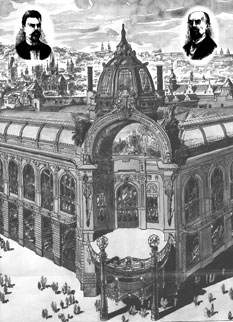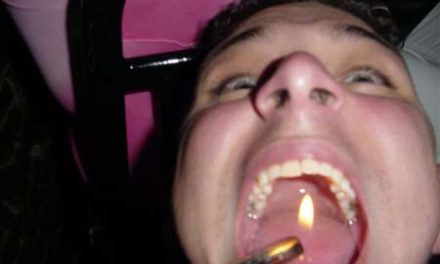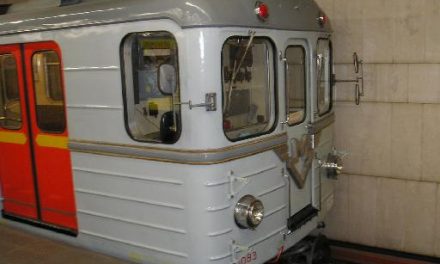Pleasing to the eye but lacking substance, it’s critics call it fancy, overstylized drivel, or worse of all, a bourgeois self-promotion.
Whether it’s architecture or art, the style is too market-oriented. Its origins lie in propaganda, advertising, and public relations. It can not be taken seriously as art. This tired refrain is debated by the Art Nouveau exhibit Intimate Space, New Distance, the thoughtfully curated exhibition housed in the recently renovated municipal house of Prague, the Obecní dům.
Amid the spectacle of what is both Art Nouveau’s greatest architectural feat and one of the most vibrant symbols of Czech nationalism, the exhibit confronts spectators with a history of Art Nouveau in Prague, outlining in the process its origins in expressionism, its flexibility as an art form, and its effect on the more commonly appreciated and unusual Czech Cubist movement of the early 20th Century.
It also effectively illustrates the important contributions Czechs have made to the world of art. The exhibition is divided into three areas and two themes. The first revolves around the history of the Obecní dům, built at the height of the Art Nouveau movement between 1905 and 1911 after a design by the Czech architects Antonin Balsanek and Osvald Polivka, and decorated with flourish by many of Bohemia’s greatest painters and sculptors, the best interior decorators, it might be said, in Prague at the time.
The second concentrates on Czech art in the 20-some years before and after the turn of the 20th century, revealing it to be an important legacy unusual for its creativity. Both exhibits unfold in the manner of a proud people showing off under-appreciated artifacts and histories of Czech culture.
The Czech influence on modern art is only now beginning to be fully appreciated. The art exhibition opens with two stylish Art Nouveau posters which illustrate the interests and origins of the Czech art world at the time, promoting exhibitions by the French sculptor Auguste Rodin and the Norwegian painter Edvard Munch. Rodin had heavily influenced Czech sculptors like Bohumil Kafka, who entered Rodin’s studio in Paris in 1904, and Josef Maratka, who organized Rodin’s 1902 exhibition in Prague.
Munch’s exhibition was organized in 1905 by the Manes Association of Artists, which represented more modern approaches to art at the time in the city. The Norwegian’s exhibition resulted in the formation of the first avant-garde group of artists in Bohemia, the Eight, two years later.
While the initial area on the left side of the gallery begins with a series of paintings chiefly useful only in observing life in Prague and the Czech countryside in the 1880s, the theme shifts and becomes more interesting with Alfonse Mucha’s graphic motifs, decorative vases by Anna Boudova under the same umbrella of style, and a breezy but elegant poster by Ludek Marold.
It’s worth noting the connection between the Pop-art world of 1960s-era United States, where Campbell’s soup cans became iconic art with Marold’s poster created decades earlier for a theater in Prague, which clearly recognizes the connections between style, commodity, and art. Frantisek Kupka’s Cosmic Spring serves as a nice comparison piece to the work of Mucha and Marold, proving that there was more going on in the Czech art world than the Succession.
Kupka’s painting is an amalgam of bright colors and mysterious shapes; it stands as one of the first works of abstract art in the world. It would significantly influence his better-known contemporary Kandinsky. Further down the hall, the range of Art Nouveau is impossible to dispute as examples of jewelry, clothing, wallpaper, glassware, and furniture enclosed in glass show off decorative art in the applied art world.
Most of the styles used can be admired best by touring the Obecní dům itself, where dramatic applications of every conceivable material can be found. The other half of the art exhibition, to the right of the opening room, concentrate on Czech Symbolism and Cubism, two unique movements which have yet to meet an appropriate level of appreciation in the West.
Highlights include a series of paintings by Jan Zrzavy which prefaces the Czech Cubist movement, a highly original era unduplicated in the world. While most of the paintings are unspectacular, the work of Czech designers who used Cubist ideas in sculpture, design, and craft making are fascinating. A clock by Gocar melts before your eyes and doubles as a counter-top; a chair and coffeetable begs to by tried out, although a sign says “don’t sit on me.” Coffee cups, saucers, boxes, and sugar bowls detailed in black and white outline Pavel Janak’s work. (For a more detailed look at Cubism, head to the current exhibition at the Cubist house on Celetna.)
The Obecní dům’s origins lie in Czech nationalism. In fact, its building was opposed at the time by the German minority living in Prague. It’s both ironic and appropriate then that the chief virtues of Intimate Space, New Distance is in reminding the world of the important contributions members of the Czech state ma to the world or art and architecture at the turn of this century. Take time after touring the exhibits to walk around the Dum itself, observing both its exterior and interior.
Mucha’s stained glass in the pricey French restaurant can’t be missed, though if you want to watch the world walk by in style, the kavarna across the hall is a better idea. Coffee starts out affordably, but service is friendlier and faster than anywhere else in Prague, or Vienna for that matter, whose coffeehouse style is mimicked by the Dum’s menu and style of service. The pivnice, in the basement, has been restored to its original splendor as well, and is worth stopping by for lunch or a beer. The Pilsner Urquell’s are 12 degree and well-poured, and you’ll probably never eat hovezi gula a bramborove knedliky in a more beautiful setting.
While it’s priced higher than your neighborhood pivnice, it’s also better than the average gulas. Rooms housing the infamous Repre Club are not yet open to the public, but marvel anyway that only a few years ago the Obecní dům was both a backpacker heaven and the place to be seen in the ex-pat community.
It has now survived three occupations; the bullets and bombs of the Nazi’s, the idleness of the communists, and the spilled beer and vomit of the (primarily) Americans.
Obecní dům, Náměstí Republiky 5 110 00 Praha, Praha 1. +420 222 002 763 www.obecnidum.cz





